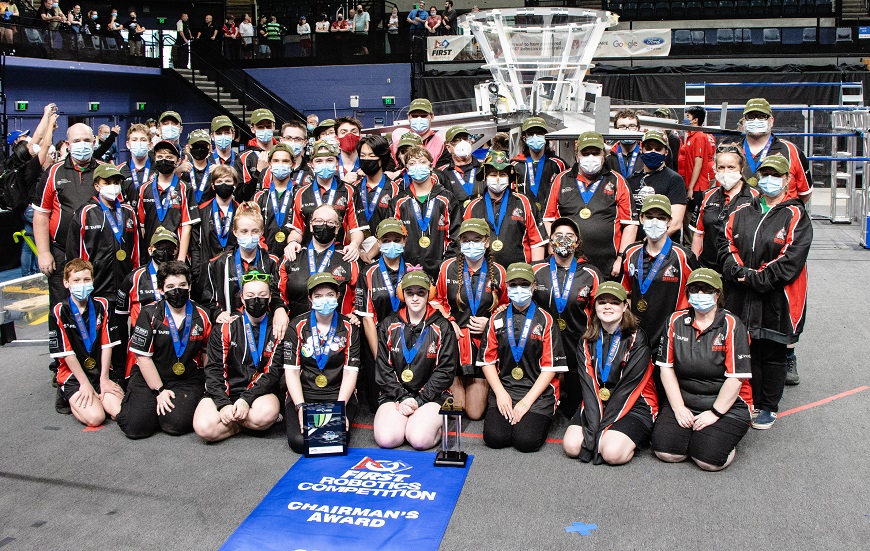Introduction to Project Oslo FRC
In a world increasingly driven by technological advancement and environmental concerns, Project Oslo FRC has emerged as a groundbreaking initiative. Designed to merge the power of robotics with sustainable practices, the project aims to revolutionize various industries and impact the Oslo community positively. The acronym FRC commonly refers to “FIRST Robotics Competition,” but here it symbolizes a broader focus on Futuristic Robotics and Conservation—a perfect alignment with the mission of Project Oslo.
The Origins of Project Oslo FRC
The seeds of Project Oslo FRC were planted when leaders in the tech, environmental, and civic sectors came together to create a project that would not only benefit the community but also lead to advancements in sustainable robotics. With contributions from Oslo’s municipal authorities, tech companies, and environmental organizations, Project Oslo FRC is the result of a powerful collaboration.
Goals and Objectives of Project Oslo FRC
Primary Goals The primary aim of Project Oslo FRC is to develop a sustainable model that utilizes robotics and automation to address urban challenges. This includes waste management, renewable energy integration, and transportation solutions.
Short-term and Long-term Objectives
- Short-term: Improve infrastructure, engage with the community, and implement the first phase of robotics-based solutions in Oslo.
- Long-term: Achieve a more sustainable and technologically advanced Oslo by reducing carbon emissions and enhancing urban efficiency through robotics.
Key Components of Project Oslo FRC
Technological Innovations
Project Oslo FRC integrates state-of-the-art robotics and AI systems. These technologies are designed to address a range of urban needs, from automated recycling to AI-driven traffic systems that can optimize city travel in real-time.
Environmental Impact
With a focus on sustainability, Project Oslo FRC employs eco-friendly practices. For instance, the project includes solar-powered robots and uses recycled materials in construction, demonstrating a strong commitment to reducing the project’s carbon footprint.
Community Involvement
Engaging the local community is a major aspect of the project. Through educational workshops, seminars, and public showcases, Project Oslo FRC helps residents understand and appreciate the benefits of sustainable technology.
The Role of Robotics in Project Oslo FRC
Robotics is at the heart of Project Oslo FRC. The project utilizes robotic systems to tackle practical tasks such as waste sorting, renewable energy management, and even autonomous city services. The inclusion of robotics allows for efficient and precise task execution, which would be challenging to achieve with traditional methods.
Challenges Faced by Project Oslo FRC
Like any ambitious project, Project Oslo FRC encounters its fair share of challenges. Key issues include:
- Funding and Budgeting: Securing adequate funding to support advanced technologies and sustainable practices can be difficult.
- Technical Difficulties: Integrating new technologies into an existing urban infrastructure often leads to compatibility issues.
- Community Concerns: Some residents have concerns about privacy and data security, especially with AI-driven monitoring systems.
To address these issues, the project team holds regular community meetings and collaborates with experts to ensure ethical practices.
Project Oslo FRC’s Approach to Sustainability
Environmental sustainability is woven into every phase of Project Oslo FRC. By prioritizing renewable energy and focusing on recycling, the project seeks to minimize its environmental impact. Project Oslo FRC also promotes the use of electric vehicles and incorporates green building materials to ensure a minimal carbon footprint.
Impact on the Local Economy
Job Creation Project Oslo FRC is expected to create a variety of new jobs, from robotics engineers to community outreach coordinators. This initiative has already brought numerous job opportunities to Oslo’s tech sector and is expected to have a positive ripple effect on the local economy.
Potential Challenges Despite the economic boost, there are concerns about job displacement due to automation. To mitigate this, the project includes training programs to help residents acquire new skills relevant to an increasingly automated workforce.
Future Prospects for Project Oslo FRC
The future of Project Oslo FRC is promising, with expansion plans that could see its technology and methods implemented in other cities. The project aims to continuously evolve, adopting new technologies and enhancing its sustainability model to meet the challenges of tomorrow.
Partnerships and Collaborations
Project Oslo FRC benefits from partnerships with major tech companies, research institutions, and environmental organizations. These collaborations provide access to advanced resources, specialized knowledge, and a network of support that contributes to the project’s success.
Technologies Used in Project Oslo FRC
The project utilizes a range of technologies, including:
- AI and Machine Learning: For data analysis and predictive modeling.
- Robotics: To automate tasks like waste management and energy monitoring.
- IoT (Internet of Things): To connect devices for real-time monitoring and control.
These technologies enable Project Oslo FRC to function efficiently and sustainably.
Case Studies: Successful Implementations
In previous projects, similar FRC initiatives have led to significant advancements. For example, in another Scandinavian city, robotics were successfully used in waste sorting and recycling, leading to a 30% increase in recycling efficiency.
Community Engagement and Outreach
Project Oslo FRC prioritizes community engagement by offering programs such as educational workshops on sustainable living and tech demonstrations for local schools. These initiatives help the community understand the project’s goals and how they can contribute to its success.
Challenges and Risk Management
Every project faces potential risks, and Project Oslo FRC is no exception. The project team employs risk management strategies, including regular audits and thorough testing, to minimize potential issues and ensure the smooth operation of all robotic systems.
Conclusion
Project Oslo FRC is an exciting initiative that combines the best of robotics, AI, and sustainable practices to create a greener, more efficient urban landscape. As it continues to grow, it stands as a model for other cities looking to integrate technology in environmentally conscious ways.

Leave a Reply